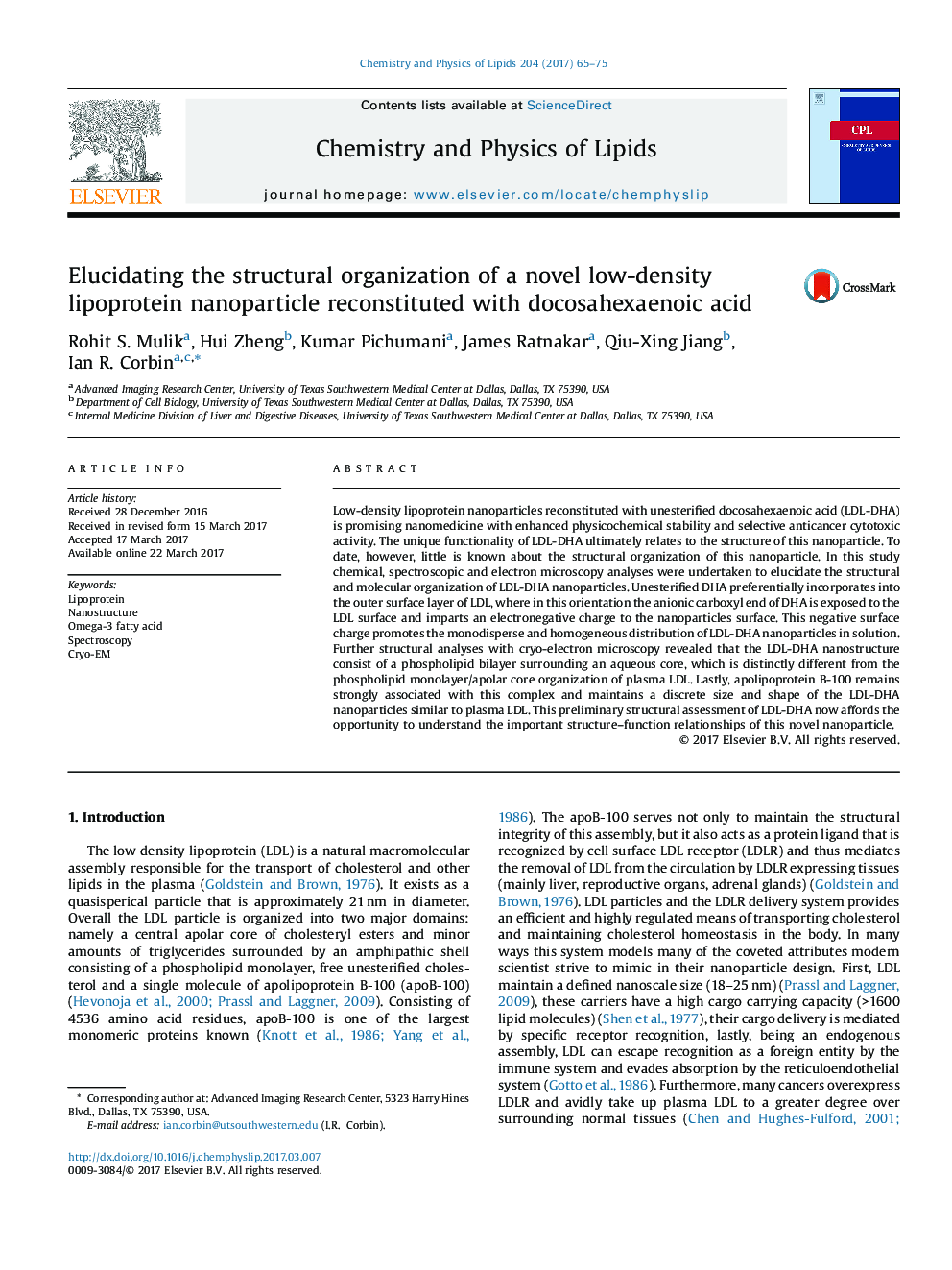| کد مقاله | کد نشریه | سال انتشار | مقاله انگلیسی | نسخه تمام متن |
|---|---|---|---|---|
| 5142689 | 1496273 | 2017 | 11 صفحه PDF | دانلود رایگان |

• LDL nanoparticles can incorporate >1100 docosahexaenoic acid (DHA) molecules per particle.
• Spectroscopic NMR analyses indicate that reconstituted DHA partitions into the outer surface/interfacial layer of the LDL particle.
• Incorporation of DHA into LDL increases the particle's membrane fluidity.
• Cryo-TEM and fluorescence quenching experiments reveal that LDL-DHA is organized as a phospholipid bilayer structure.
• LDL-DHA is a novel and unique lipoprotein-based nanostructure.
Low-density lipoprotein nanoparticles reconstituted with unesterified docosahexaenoic acid (LDL-DHA) is promising nanomedicine with enhanced physicochemical stability and selective anticancer cytotoxic activity. The unique functionality of LDL-DHA ultimately relates to the structure of this nanoparticle. To date, however, little is known about the structural organization of this nanoparticle. In this study chemical, spectroscopic and electron microscopy analyses were undertaken to elucidate the structural and molecular organization of LDL-DHA nanoparticles. Unesterified DHA preferentially incorporates into the outer surface layer of LDL, where in this orientation the anionic carboxyl end of DHA is exposed to the LDL surface and imparts an electronegative charge to the nanoparticles surface. This negative surface charge promotes the monodisperse and homogeneous distribution of LDL-DHA nanoparticles in solution. Further structural analyses with cryo-electron microscopy revealed that the LDL-DHA nanostructure consist of a phospholipid bilayer surrounding an aqueous core, which is distinctly different from the phospholipid monolayer/apolar core organization of plasma LDL. Lastly, apolipoprotein B-100 remains strongly associated with this complex and maintains a discrete size and shape of the LDL-DHA nanoparticles similar to plasma LDL. This preliminary structural assessment of LDL-DHA now affords the opportunity to understand the important structure–function relationships of this novel nanoparticle.
Journal: Chemistry and Physics of Lipids - Volume 204, April 2017, Pages 65–75